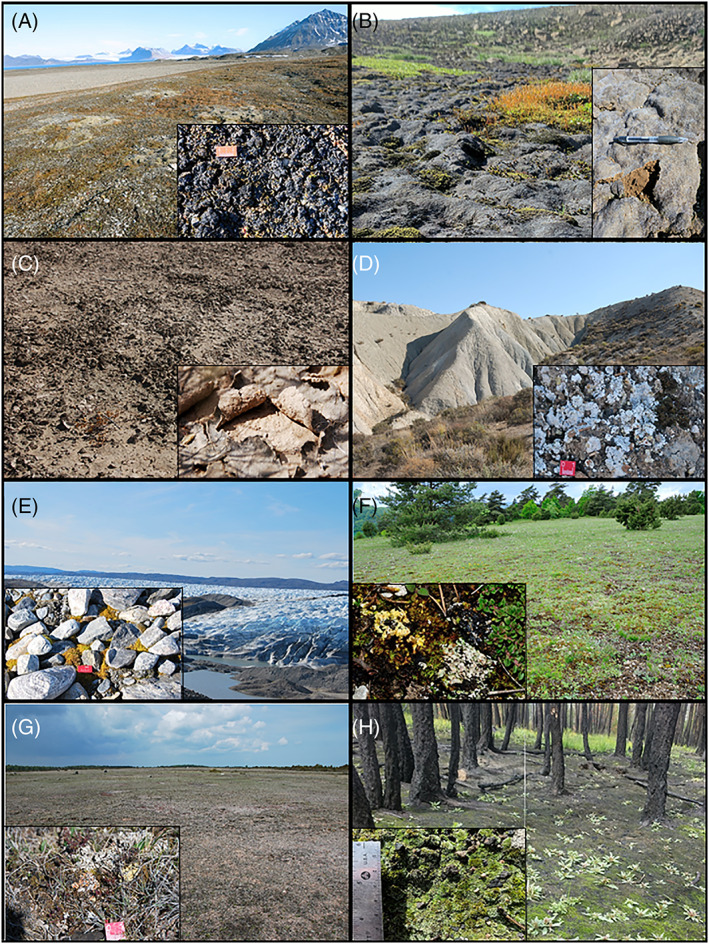Fig. 7.

Biocrusts varying in form and function within different climatic, edaphic, and land‐use settings. (A) Polar region with low cover of vascular vegetation, but a dense cover of cyanobacteria‐dominated biocrusts with bryophytes; Zeppelinhamna, Ny Alesund, Spitsbergen. (B) Liverwort‐dominated biocrusts; because of extreme frost‐heaving, biocrusts are smoother overall than uncrusted soils; Icelandic Highlands. (C) ‘Peeling’ biocrust, dominated by cyanobacteria; Central Chihuahuan desert, Mexico. (D) Biocrust on gypsiferous soil, with particularly high coverage of chlorolichens; Tabernas Badlands, Spain. (E) Postglacial biocrust, dominated by mosses and cyanobacteria; Kangerlussuaq region, Greenland. (F) Biocrusts of temperate dry meadows (‘Trockenrasen’) with typical lichen community comprising Fulgensia fulgens, Toninia caerulionigricans, Cladonia convoluta, and Diploschistes muscorum; Ruine Homburg, Aschfeld, Germany. (G) Stora Alvaret (barren limestone terrace) on the island of Öland, Sweden; biocrusts with lichens of the genera Fulgensia, Psora, and Cladonia. (H) Biocrusts after fire in former forests; main photograph: Lolo Fire, western Montana, USA; insert: Cajete fire, northwestern New Mexico, USA (photographs courtesy of Henry Grover).
